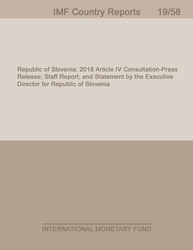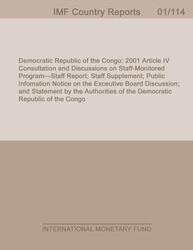
Switzerland: Financial System Stability Assessment
Switzerland: Financial System Stability Assessment
READ MORE...
Volume/Issue:
Volume 2025
Issue 266
Publication date: September 2025
ISBN: 9798229026727
$20.00
Add to Cart by clicking price of the language and format you'd like to purchase
Available Languages and Formats
| English |
Prices in red indicate formats that are not yet available but are forthcoming.
Topics covered in this book
This title contains information about the following subjects.
Click on a subject if you would like to see other titles with the same subjects.
Finance , Business and Financial , C , bank stress testing , climate risk analysis , FSAP finding , bank solvency stress test result , bank liquidity , liquidity shock , work of the Financial Sector Assessment Program , Financial sector stability , Stress testing , Anti-money laundering and combating the financing of terrorism (AML/CFT) , Systemic risk , Global
Also of interest
Summary
This paper presents the Financial System Stability Assessment report for Switzerland. The Swiss financial system is large, sophisticated, and of global importance, especially through its asset and wealth management services. It has faced significant challenges since the last financial sector assessment program, most notably during the collapse of Credit Suisse, its second largest Global Systemically Important Bank. Financial stability was preserved through exceptional government measures, which attracted intense public scrutiny and highlighted salient gaps in supervision and crisis management frameworks. Switzerland’s private sector leverage ranks among the highest globally and large real estate exposures pose systemic risks. Stress tests for banks and insurers indicate broad resilience to severe solvency and liquidity shocks. Once implemented, the authorities’ proposed reforms are expected to strengthen the Swiss Too-Big-To-Fail framework, bank governance, and crisis prevention and preparedness. In order to bolster supervisory effectiveness, the Swiss Financial Market Supervisory Authority needs enhanced legal powers, increased resources, and a more direct and intrusive approach. Heightened vigilance is needed in the areas of governance, risk management, market conduct, anti-money laundering/combating the financing of terrorism, and cyber risk, together with maintaining strong capital and liquidity buffers.
Copyright © 2010 - 2025
Powered by:
AIDC



